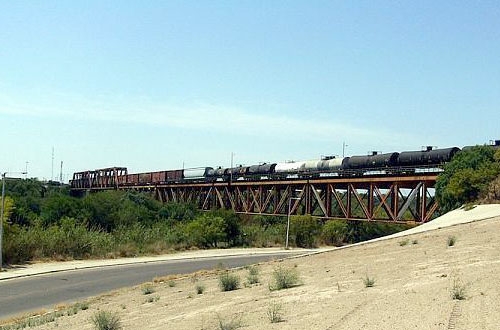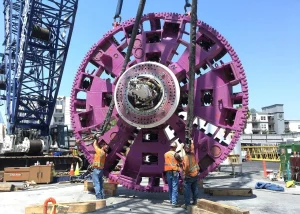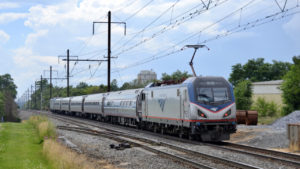KCS improves capacity of cross border bridge
Written by Mischa Wanek-Libman, editor
Kansas City Southern identified the International Rail Bridge at Laredo/Nuevo Laredo as an opportunity to improve operational efficiency and a candidate for the Business Process Improvement (BPI) Program in 2015.
The railroad said a project was established, and a BPI team, including KCS and Kansas City Southern de Mexico Operations, began working on reviewing processes to sustainably improve productivity over the International Bridge.
This integrated team of subject matter experts began moving through the BPI project stages with exciting results. First, yard managers, clerks and crew from both railroads were interviewed to put together a complete process map of on-bridge and yard processes. The information was then compared with data from Automatic Equipment Identification readers and manual collection to identify opportunities for improvement.
The team then brought additional subject matter experts from transportation, network design, customer service and cross-border operations together in Laredo to brainstorm solutions for the identified opportunities. While many solutions were identified, the team decided to implement those that were process-related and could make an immediate impact without capital investment. The solutions implemented included:
1. A new communication process to send train information to Mexico Customs in a timelier manner, allowing them to prepare for the next train headed to the bridge;
2. Creation of a lineup process so each railroad can see in what sequence the trains will cross and all information needed to prepare for each train; and
3. Standard operating protocols to increase speed for trains pulling off the bridge.
These solutions were implemented in November and December 2015. New metrics were created to track the impact; including train speed on the bridge and the amount of time trains idle on the bridge. Additionally, a total productivity metric was created to identify how many minutes each unit of freight took to cross the bridge.
After 60 days of tracking, significant impact to the bridge’s performance was observed. Speeds increased by 10 percent and total time spent on the bridge per unit of freight decreased 12 percent. These results and their impact were verified using statistical testing methods to ensure the accuracy of the metrics and sustainability of the changes. The impact of these results increased productivity at the bridge and the potential capacity to handle more trains on a daily basis.
These process/productivity improvements are expected to continue, regardless of the state of the economy and will be built upon for continuous improvement.
The International Rail Bridge at Laredo/Nuevo Laredo provides a key link between the United States and Mexico, specifically, the Mexican state of Nuevo León, which KCS said will be a focal point of activity following a change in Mexican law in 2013 that allows private-sector participation in the energy sector.
KCS said it is aggressively pursuing opportunities to grow its energy business. Last week, a delegation of KCS executives and strategic partners visited government and private-sector leaders in Monterrey and Mexico City to discuss new business opportunities made possible by Mexico’s energy reform.





